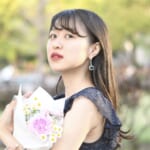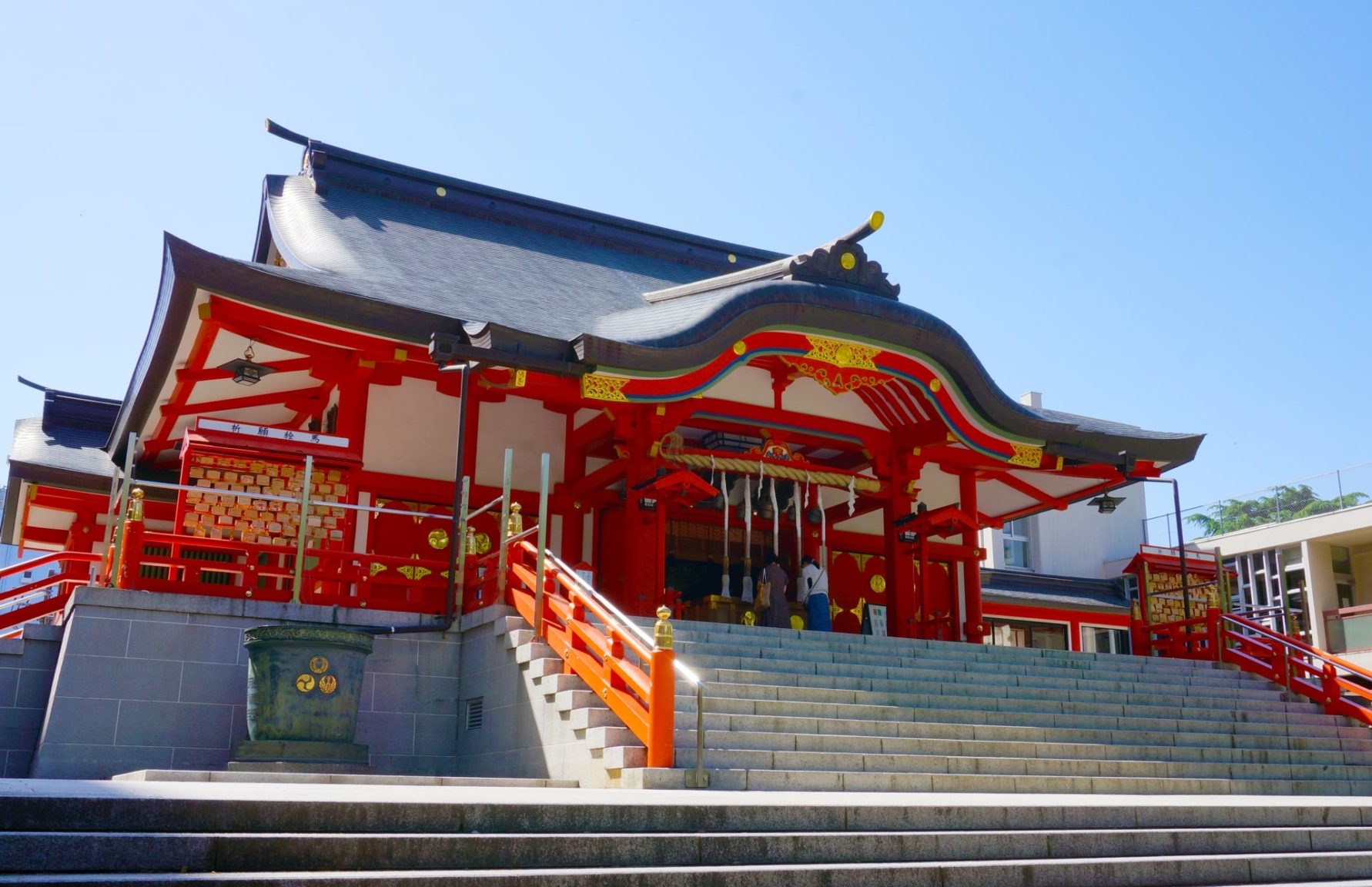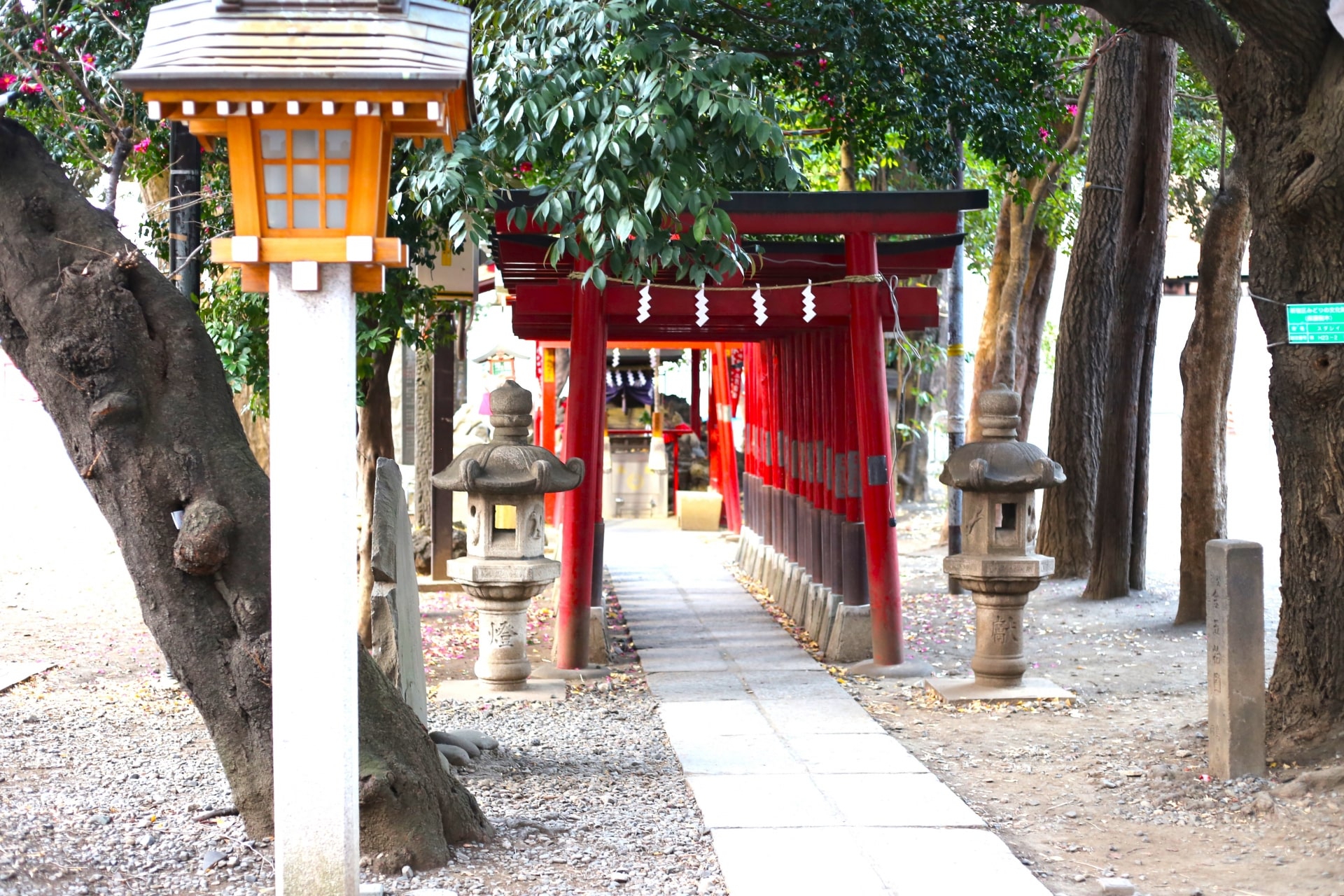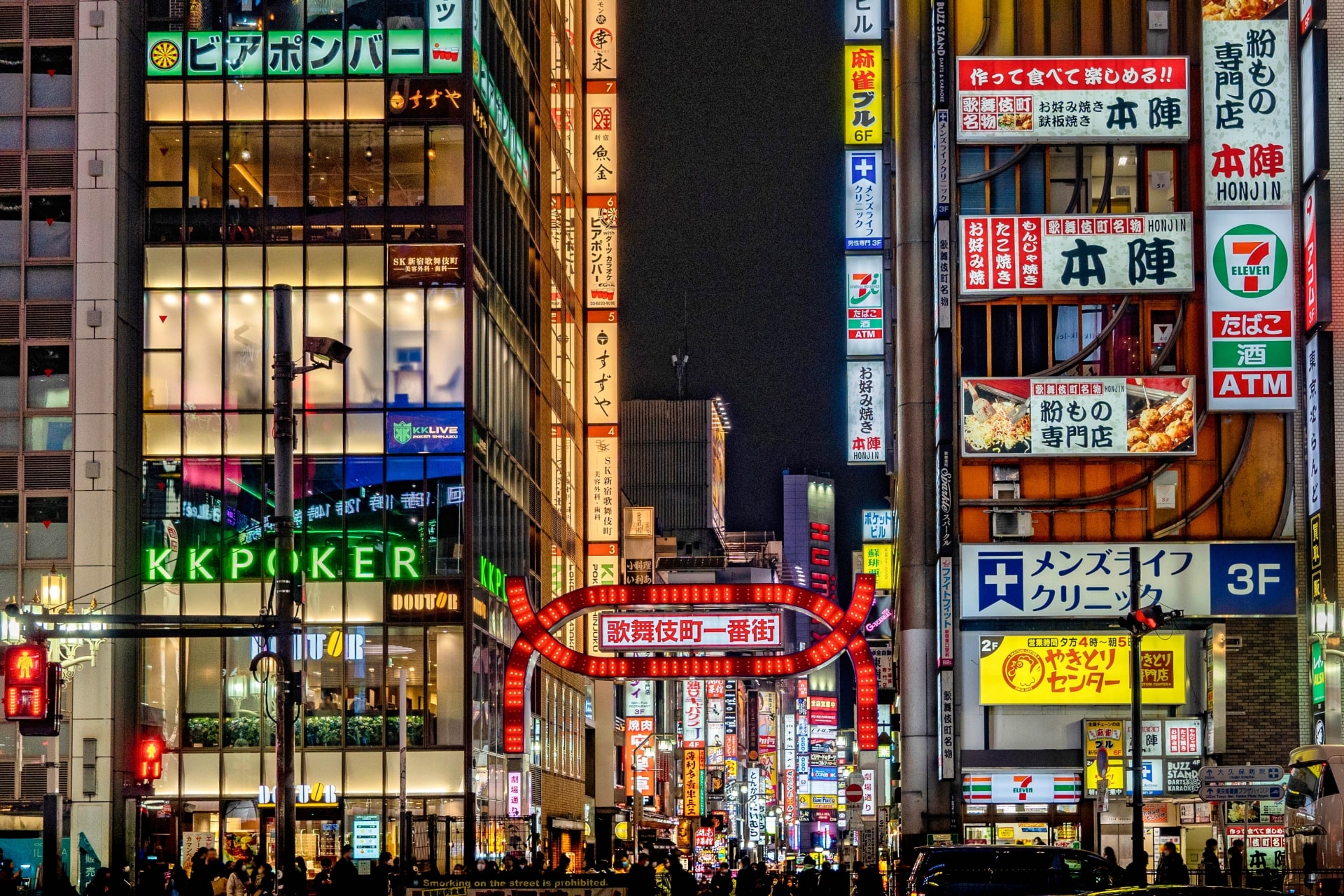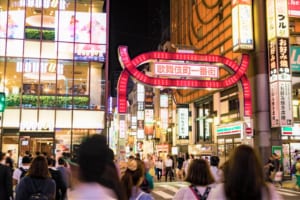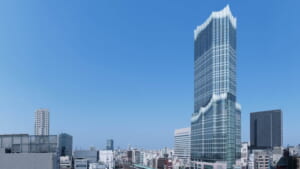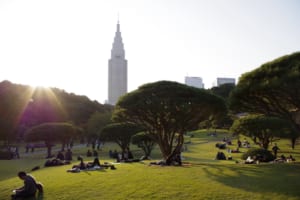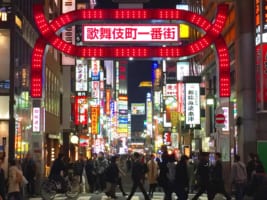Hanazono Shrine: A Large Shinto Shrine in Shinjuku
Guide to Hanazono Shrine in Shinjuku
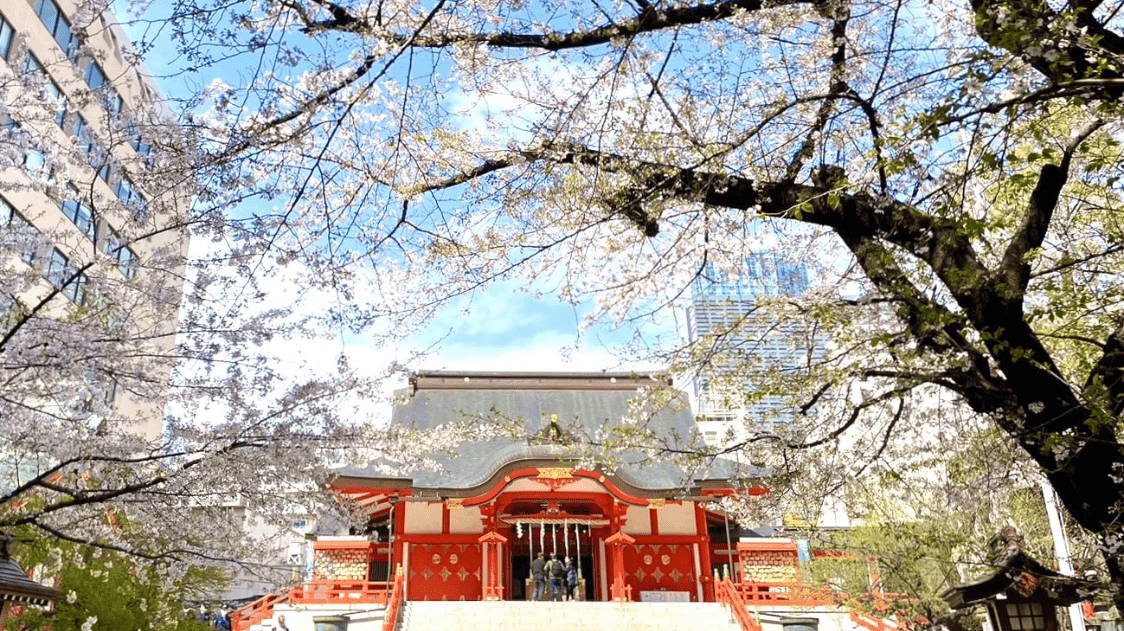
Did you know that there is a highly popular Shinto Shrine in the middle of the city of Shinjuku? I recommend that you take a break from the bustling atmosphere of the city and refresh yourself in a place so quiet that you won’t believe you are still in the city.
That place is called Hanazono Shrine which is located in the center of Shinjuku, Tokyo. I will introduce to you what this shrine is all about as well as some of the cool things you can do nearby. Let’s take a look at the Hanazono Shrine in Shinjuku!
For a general overview of the Shinjuku area, don’t miss our All-in-One Guide to Shinjuku.
What is Hanazono Shrine?
Hanazono Shrine (花園神社) is a prominent Shinto sanctuary located next to Kabukicho. Serving as a guardian shrine for the area since well before the establishment of Edo as Japan’s capital, it has long been revered for its protective and prosperous blessings. Dedicated to Inari, the deity of fertility, prosperity, and success, Hanazono Shrine attracts businesspeople, artists, and locals, each seeking good fortune in various aspects of life.
Despite being surrounded by modern skyscrapers and neon lights, the shrine’s peaceful grounds offer a welcome respite. Its distinctive vermilion torii gates, lush greenery, and quiet paths create a tranquil atmosphere that invites visitors to pause and reflect. Popular particularly among those hoping for marital harmony and familial blessings, Hanazono Shrine embodies the spirit of traditional Japanese culture amidst a contemporary urban landscape.
Historical Background of Hanazono Shrine
Hanazono Shrine first appears in historical records as early as 1590, before the Edo Period (1603-1868). Originally located about 250 meters south of its current spot (now occupied by the Isetan department store), the shrine was moved during the Kan’ei era (1624–1644) when land was needed for the residence of a shogun’s vassal. In its early days, the shrine even combined Shinto and Buddhist practices until the Meiji Restoration mandated a separation between the two. For a time, an administrative error reduced its name to a “town Inari shrine,” but it finally reclaimed the title Hanazono Shrine in 1965.
Throughout its long history, Hanazono Shrine has faced the trials of time—a series of devastating fires in 1780 and 1811, and later the complete destruction wrought by World War II air raids in 1945, when 90% of Shinjuku’s structures were flattened. Yet the community’s determination to preserve its cultural heritage led to its modern reconstruction using reinforced concrete, allowing it to stand as a quiet spiritual oasis in the middle of Shinjuku’s urban chaos.
Architectural Features of Hanazono Shrine
The main hall (honden) of Hanazono Shrine is constructed in the dozo-zukuri style. Although the original wooden structure succumbed to fires in 1780 and 1811 and later to the devastation of World War II, its concrete reconstruction in 1965 respects the traditional layout. Visitors can explore several sub-shrines on the grounds, such as the Itoku Inari Shrine, which is dedicated to aspects of prosperity and relationships. The compact design, surrounded by urban structures, offers a striking contrast to the towering modern buildings of Shinjuku.
Cultural Significance of Hanazono Shrine
Hanazono Shrine has long been associated with the entertainment industry. Many actors, singers, and performers visit to seek blessings before their shows. Its location in Shinjuku, a district known for its busy streets, vibrant nightlife, and areas like Kabukicho and Golden Gai, creates a compelling mix of the old and new.
What to do at Hanazono Shrine
Despite its location in the middle of the city and being surrounded by modern buildings, the shrine has a peaceful atmosphere. The main hall, which serves as the primary building, is positioned atop stone steps that overlook a small open area of the shrine. Trees line the sides of the path that connects the main hall to the entrance.
Most days of the year are quiet and calm. The shrine hosts several major festivals, attracting large crowds throughout the year.
Because this shrine has many cherry trees, it is also very popular during the cherry blossom season from late March to early April.
In the evening, the shrine is beautifully illuminated, inviting a romantic walk.
One activity you should try is the “Kitsune Mikuji,” which are fortune strips featuring a fox (kitsune) motif. Some of these Kitsune Mikuji have scrolls in their mouths, while others have spheres. You can purchase them individually or as a set of two.
Festivals and Annual Events
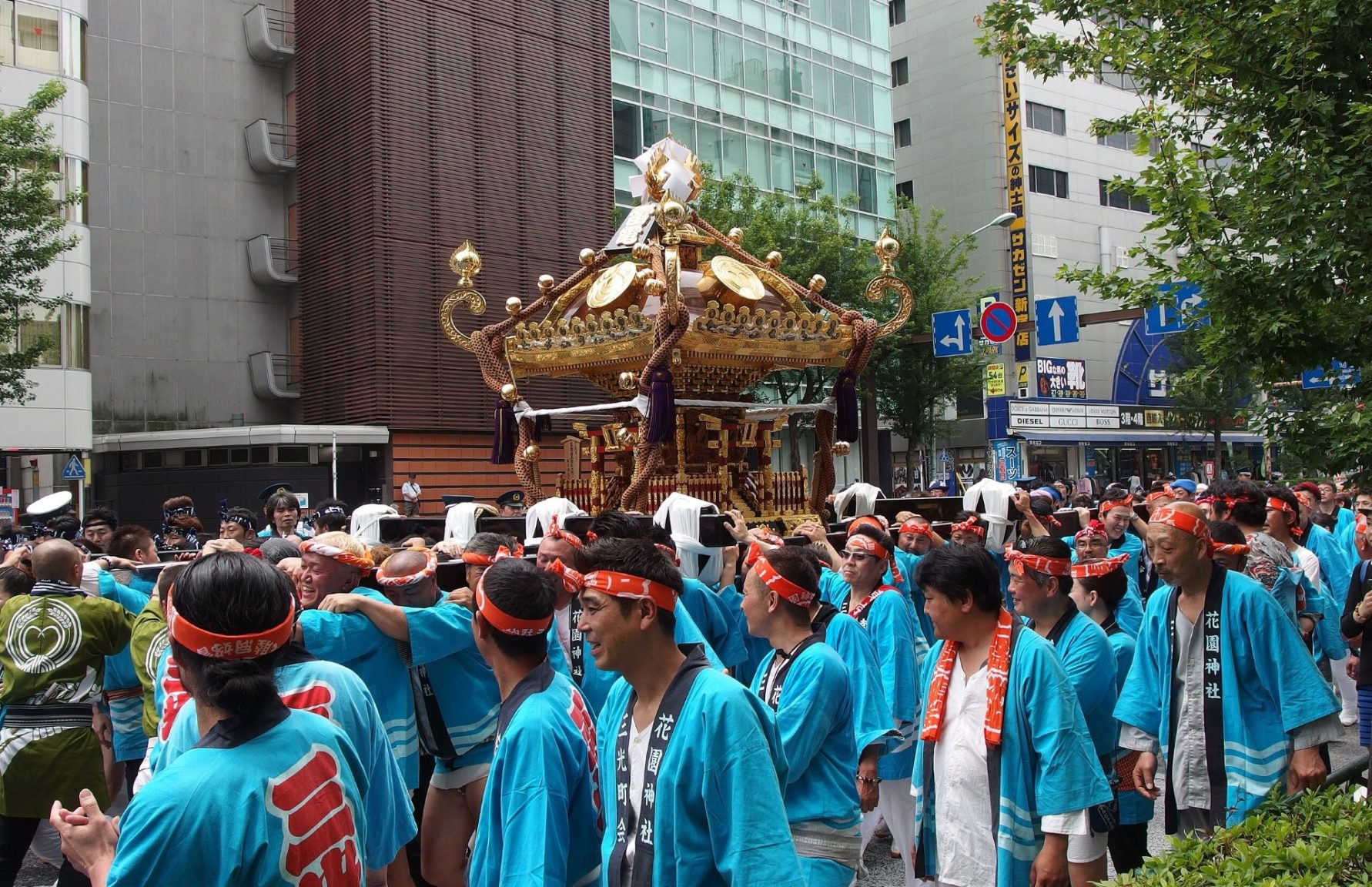
Hanazono Shrine is renowned for its active calendar. Some of the key events include:
-
New Year’s Prayers: Crowds gather on January 1st to welcome the year with prayers for prosperity.
-
Yunohana-Matsuri: In January, large bonfires mark the seasonal transition.
-
Setsubun Festival: Celebrated in February with ritual bean throwing to drive away misfortune.
-
Hatsu-Uma Festival: Also in February, this festival marks the first horse’s day, steeped in tradition.
-
Reitaisai Festival: The shrine’s Annual Grand Festival is held in late May. This three-day celebration features mikoshi (portable shrines) processions and numerous food and craft stalls.
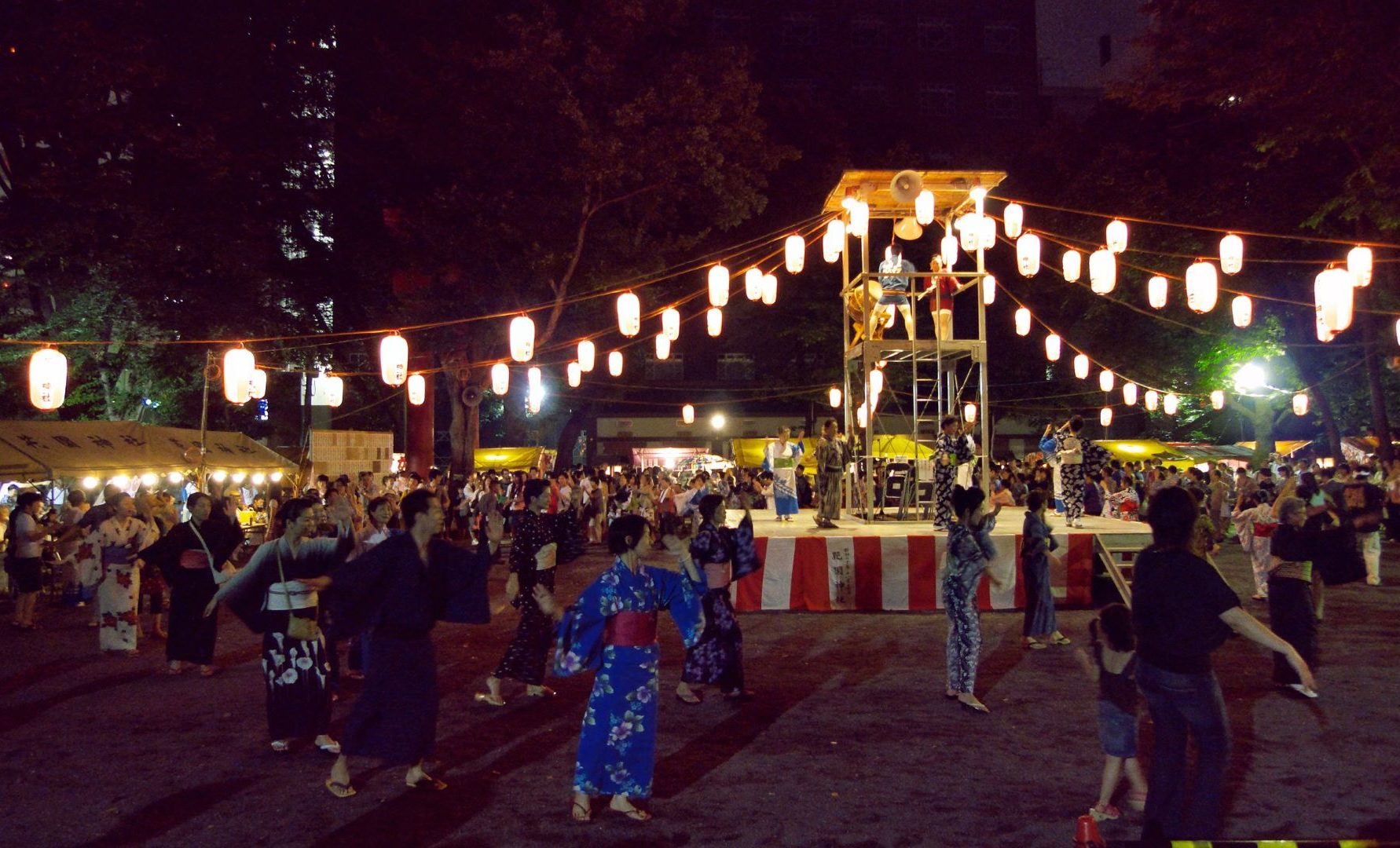
- Bon Odori: A popular summer festival, held for two days on the first Friday and Saturday of August.
-
Tori-no-Ichi: In November, the market known for its decorative bamboo rakes draws hundreds of thousands of visitors who seek luck in business and personal endeavors.
-
Toshikoshi-no-ōharae: On December 31st, a purification ceremony marks the transition to the new year.
How to get to Hanazono Shrine
Hanazono Shrine is just a few minutes walk from Shinjuku Station (JR lines) and the Kabukicho entertainment district. Hanazono Shrine is slightly hidden behind the buildings along Yasukuni Street. It’s between a convenience store and a sushi restaurant. It might be a little difficult to find at first since it is hidden behind tall buildings.
 Access Access |
6 minute walk from Shinjuku Station (JR Lines). |
|---|---|
 Official Website Official Website |
http://www.hanazono-jinja.or.jp/ |
Tourist attractions near Hanazono Shrine
Kabukicho (歌舞伎町) is known as the largest entertainment district in Tokyo, with hundreds of restaurants, bars, nightclubs, and other entertainment facilities. The street is illuminated with colorful neon lights all night long. It is also popular as a night photography spot.
Tokyu Kabukicho Tower (東急歌舞伎町タワー) opened in April 2023 in Shinjuku Kabukicho and is one of the largest hotel/entertainment facility tower complexes in Japan. The height is about 225m.
Shinjuku Gyoen ( 新宿御苑 ) is a vast park located in the center of the Shinjuku area. The surrounding area is one of the busiest areas in Tokyo, but the park offers a huge green space with a peaceful atmosphere. Shinjuku Gyoen is one of the most popular spots.
Here are more things to do in Shinjuku!
If you’re interested in Shinjuku, you must visit. There are countless fascinating things to experience!
For more information about Shinjuku and nearby places, check these articles below, too!
Written by
